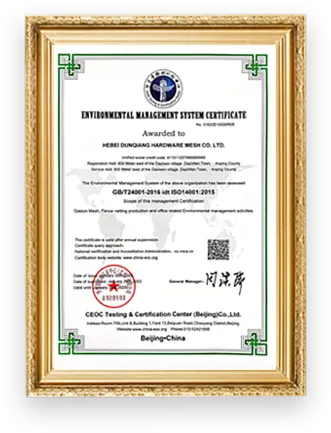
- Afrikaans
- Albanian
- Arabic
- Armenian
- Azerbaijani
- Basque
- Belarusian
- Bengali
- Bosnian
- Bulgarian
- Croatian
- Czech
- Danish
- Dutch
- English
- Esperanto
- Estonian
- Finnish
- French
- Galician
- Georgian
- German
- Greek
- hawaiian
- Hindi
- Hungarian
- Indonesian
- irish
- Italian
- Lao
- Latvian
- Lithuanian
- Luxembourgish
- Macedonian
- Maltese
- Myanmar
- Norwegian
- Polish
- Portuguese
- Romanian
- Russian
- Serbian
- Slovak
- Somali
- Spanish
- Swedish
- Thai
- Turkish
- Turkmen
- Vietnamese
नवम्बर . 26, 2024 07:41 Back to list
Calculating Barbed Wire Length per Kilogram for Various Applications
Understanding Barbed Wire Meter Per Kilogram
Barbed wire is a common agricultural and security fencing material known for its durability and effectiveness in enclosing livestock and enhancing perimeter security. As demand for this versatile product grows, understanding its essential properties—particularly the measurement of meter per kilogram—becomes crucial for both producers and consumers. This article will delve into the significance of this measurement and its implications in various applications.
What is Barbed Wire?
Barbed wire consists of multiple strands of wire twisted together with sharp points or barbs at regular intervals. Originally developed in the late 19th century, it became an essential tool for farmers to manage their livestock and has since been adopted for a wide range of uses, including fencing for properties, military installations, and correctional facilities. Its affordability and ease of installation make it a favorable choice for many applications.
Measuring Barbed Wire The Meter per Kilogram Ratio
The meter per kilogram (m/kg) ratio indicates the length of barbed wire that can be obtained for every kilogram of material. This measurement is essential for several reasons
1. Material Efficiency Understanding the m/kg ratio helps manufacturers optimize their production processes. By calculating how much wire can be produced from a given weight of raw materials, they can ensure that they are using their resources efficiently. This efficiency directly impacts production costs and, consequently, the final pricing for consumers.
2. Cost Assessment For consumers, knowing the m/kg ratio allows for better cost analysis. If a specific supplier offers a barbed wire option with a high length for its weight, it may be more economical to purchase, particularly for large projects. Buyers can compare products based on this measurement to ensure they are getting the best value for their investment.
3. Durability Considerations The m/kg ratio can also be indicative of the wire's gauge and durability. Thicker wires might weigh more and thus yield fewer meters per kilogram, but they may offer enhanced strength and longevity compared to thinner wires. Hence, it’s essential to consider not just the length of wire but also its intended application and the environmental conditions it will face.
barbed wire meter per kg

4. Application Suitability Different applications require different specifications of barbed wire. For example, agricultural uses may prioritize flexibility and resistance to corrosion, while security applications may demand higher tensile strength. Understanding the m/kg ratio can help consumers choose the right type of wire for their specific needs.
Factors Influencing the Meter Per Kilogram Ratio
Several factors can influence the m/kg ratio of barbed wire, including
- Wire Gauge Thicker wires tend to weigh more per meter, resulting in a lower m/kg ratio. Conversely, thinner wires can provide a longer length per kilogram but may sacrifice strength.
- Material Composition The type of metal used in manufacturing the wire, whether it's galvanized steel, stainless steel, or another material, can affect both strength and weight, thus impacting the m/kg ratio.
- Manufacturing Processes Advances in manufacturing techniques can lead to variations in wire profiles, including the spacing and design of barbs, thereby altering the weight and length attributes of the final product.
Conclusion
In the context of barbed wire production and usage, understanding the meter per kilogram measurement is critical for both manufacturers and consumers. This ratio not only aids in assessing cost-effectiveness but also influences decisions regarding suitability and durability for specific applications. Whether fencing in cattle, securing a property, or serving other purposes, knowledge of barbed wire specifications ensures that stakeholders can make informed decisions that best suit their needs. As the market continues to evolve, ongoing education about these measurements will remain essential in navigating the options available in the world of fencing solutions.
-
Your Ultimate Solution for Australian Temporary Fencing
NewsMay.14,2025
-
The Ultimate Guide to Crowd Control Barriers: Secure Your Events with Ease
NewsMay.14,2025
-
Secure Your Livestock with High-Quality Livestock Fence Panels
NewsMay.14,2025
-
Enhance Your Livestock Management with Top-Quality Cattle Fences
NewsMay.14,2025
-
Enhance Security and Safety with Temporary Fencing Solutions
NewsMay.14,2025
-
Corral Gates
NewsMay.14,2025









